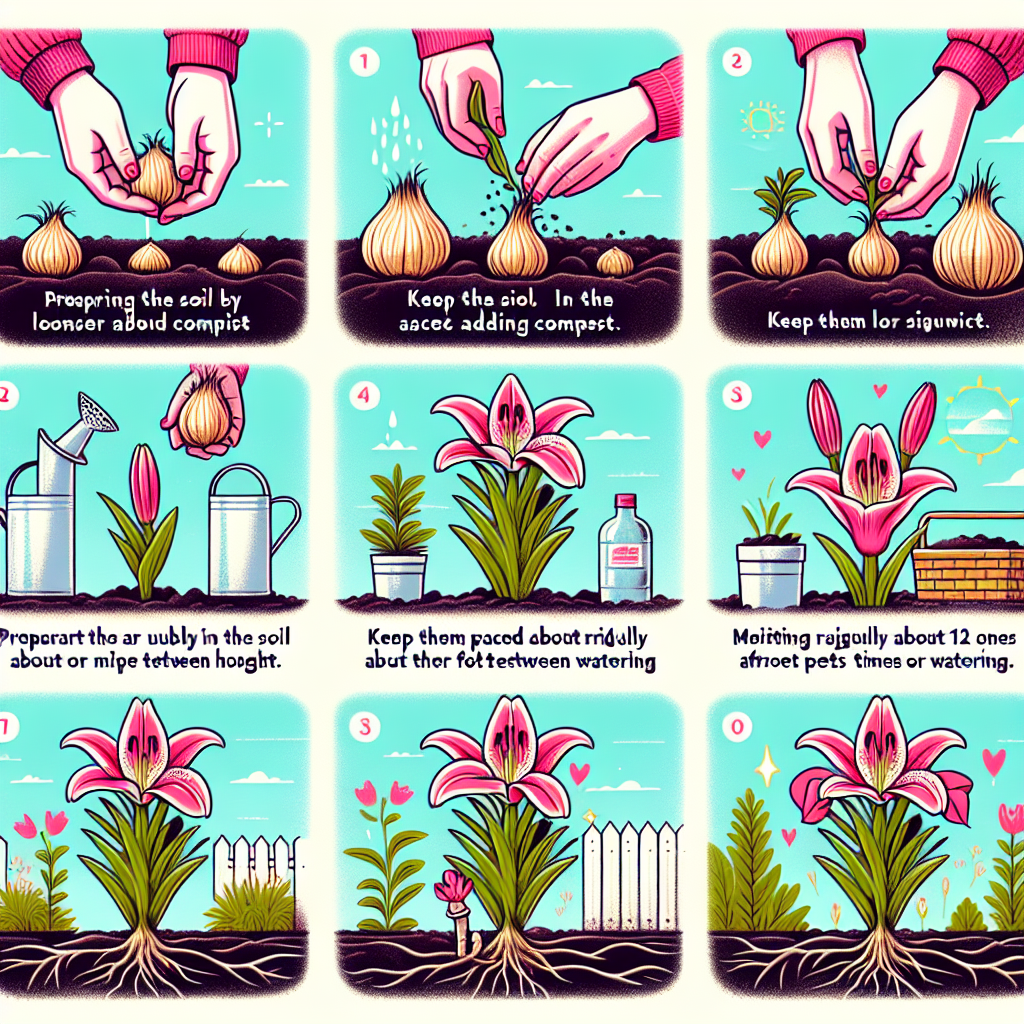
How to grow rose lilies
Introduction to Rose Lilies
Rose lilies, a stunning and fragrant addition to any garden, are renowned for their unique appearance and delightful scent. These flowers are hybrids of the traditional Oriental lilies and trumpet lilies, characterized by their large, showy blooms that often exhibit a beautiful combination of rose, white, and yellow hues. In this article, we'll explore how to grow rose lilies successfully, covering everything from selection to care tips that will help your garden flourish.
Choosing the Right Location
Before diving into the actual process of growing these beautiful flowers, it's crucial to select the right location in your garden. Rose lilies thrive in specific conditions that can enhance their growth and blooming potential. Here are key factors to consider:
- Sunlight: Rose lilies prefer full sun, which means they should receive at least six hours of direct sunlight each day.
- Soil: These flowers thrive in well-draining, fertile soil. It's advisable to amend your soil with organic matter to improve drainage and nutrient content.
- Spacing: Allow enough space between plants for air circulation, which helps prevent disease.
Preparing the Soil
Proper soil preparation is essential for the successful growth of rose lilies. They prefer slightly acidic to neutral pH levels (around 6.0 to 7.0). Here’s a step-by-step guide on how to prepare the soil:
- Testing the Soil: Use a soil test kit to check the pH levels and nutrient content. This will help you understand what amendments you might need.
- Amending the Soil: Based on your soil test results, consider adding compost, peat moss, or well-rotted manure to improve soil fertility and structure.
- Loosening the Soil: Till the soil to a depth of about 12 inches to ensure good drainage and root penetration.
Planting Rose Lilies
Now that you have chosen the right spot and prepared the soil, it's time to plant your rose lilies. Follow these steps to ensure healthy growth:
Selecting Bulbs
When selecting bulbs, look for large, firm bulbs without signs of mold or decay. The quality of your bulbs will greatly affect your plant's performance.
Planting Time
The best time to plant rose lily bulbs is in the fall, about 6 to 8 weeks before the ground freezes. In warmer climates, you can also plant them in spring.
Planting Process
- Dig a hole approximately 6 to 8 inches deep.
- Space the bulbs about 12 to 18 inches apart.
- Place the bulb in the hole with the pointed end facing up.
- Cover the bulb with soil and water thoroughly.
Caring for Rose Lilies
Proper care is vital for encouraging your rose lilies to thrive. Here are some essential care tips:
Watering
Rose lilies prefer moist but well-drained soil. Water them regularly, especially during dry spells. However, avoid overwatering, as this can lead to bulb rot.
Fertilizing
During the growing season, apply a balanced fertilizer specifically formulated for flowering plants. Follow the instructions on the packaging for the best results:
- Before Planting: Incorporate slow-release fertilizer into the planting hole.
- After Blooming: Consider applying a high-potash fertilizer to promote bulb development for the next season.
Mulching
Applying a layer of organic mulch around the base of the plants helps retain moisture, suppress weeds, and keep the soil temperature consistent. Use materials like shredded bark, straw, or wood chips.
Pruning and Deadheading
After your rose lilies bloom, it's essential to deadhead the spent flowers, which can encourage a longer bloom period and prevent the plants from expending energy on seed production. Here's how to do it:
- Use clean, sharp scissors or pruners.
- Cut off the flower stem right above the first set of leaves.
Pest and Disease Management
Like all plants, rose lilies can be susceptible to pests and diseases. Below are some common issues and how to manage them:
Pests
- Spider Mites: Check for webbing on the leaves. Keep the plants well-watered and consider using insecticidal soap to control infestations.
- Snails and Slugs: These can cause physical damage to your lilies. Use traps or non-toxic bait to manage their populations.
Diseases
- Bulb Rot: This is often caused by overwatering. Ensure that your lilies are planted in well-drained soil.
- Fungal Infections: Ensure good air circulation and avoid wetting the foliage when watering to prevent diseases like botrytis.
Encouraging Re-blooming
To encourage your rose lilies to bloom again in subsequent seasons, it’s vital to care for them properly throughout the growing season. Follow the guidelines below:
- Fertilization: Apply fertilizer in the early spring as new growth begins.
- Allow Foliage to Die Back: After blooming, let the foliage die back naturally to store energy in the bulb for next year.
- Dividing Bulbs: Every 3-5 years, consider dividing the bulbs to give them extra space and promote healthy growth.
Conclusion
Growing rose lilies can be a rewarding endeavor for both novice and experienced gardeners. With the right conditions, care, and patience, you can enjoy magnificent blooms that elevate the beauty of your garden space. Remember to follow the tips outlined in this article, and soon, you'll be well on your way to cultivating breathtaking rose lilies that stand out in any landscape.
“The love of gardening is a seed once sown that never dies.” – Gertrude Jekyll```
By Guest, Published on September 18th, 2024